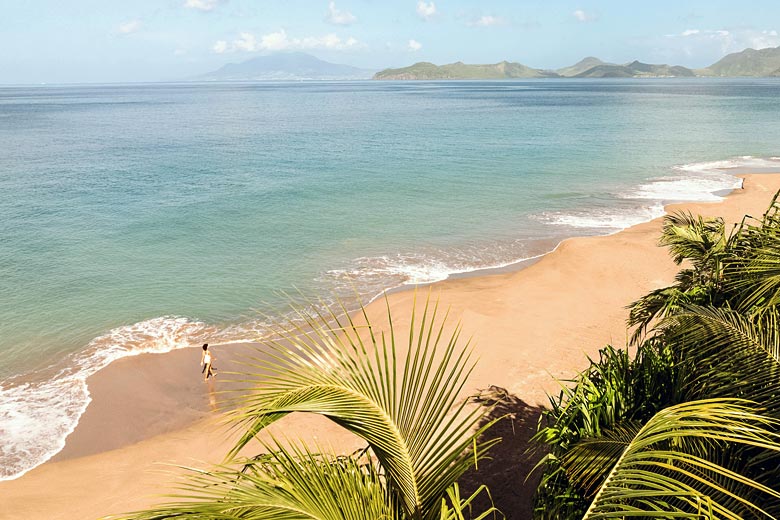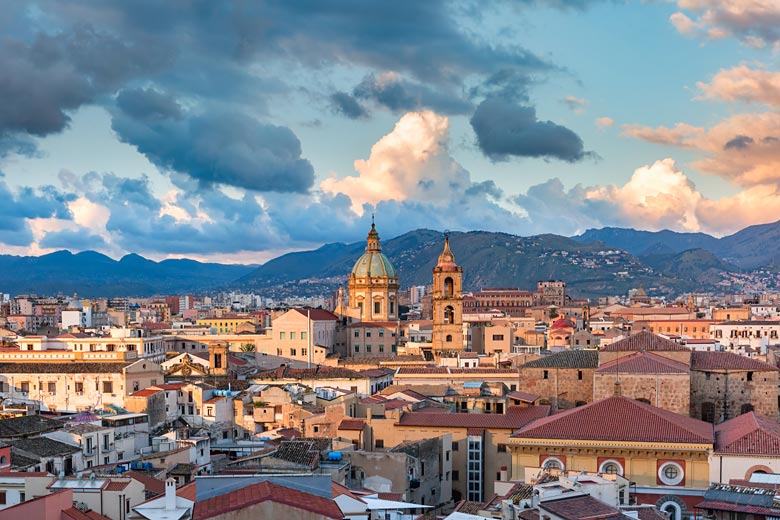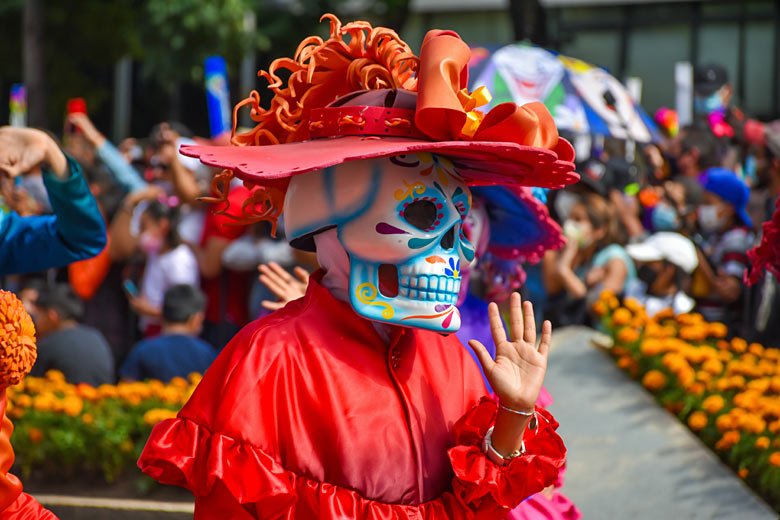See Havana in style: A classic car tour of Cuba's capital
Is there a better way to experience the Cuban capital's main sights than in a restored, gleaming vintage car with a driver (and guide) who can offer a bespoke route taking in Havana's main sights? We think not. Reclining in a 1949 canary yellow Ford Mercury Monterey convertible, with its original engine intact, is the perfect - the only - way to really see Havana.
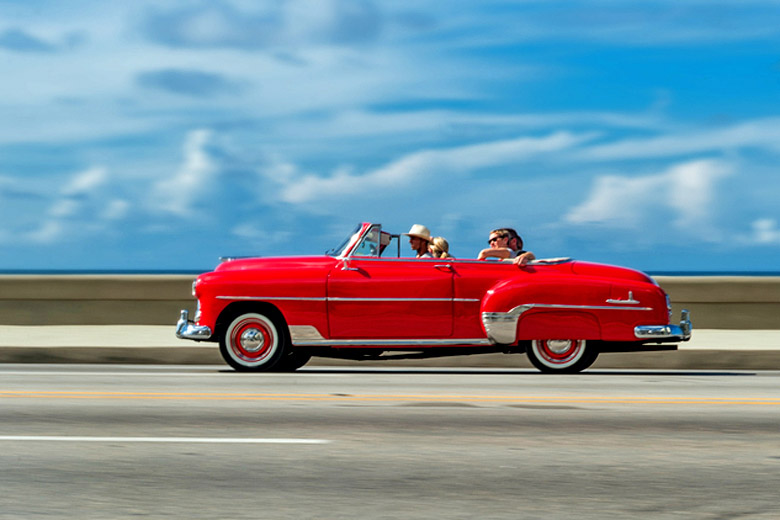
Cruising around Havana has never been easier, thanks to Virgin Atlantic's twice weekly flights from London Gatwick*. Book a great deal online today and you could be enjoying a classic car tour via a direct, 10-hour flight from the UK. Read on to find out more about touring the city's colourful streets in your very own retro wheels.
Seafront sights
Starting on Havana's ocean boulevard, the Malecón, you'll soon catch the salty sea air as it sprays city traffic breezing past the line-up of Spanish colonial, art deco, and 1950s' architectural beauties.
Across the small channel sits the stout Morro Lighthouse, which has guarded the entrance to the Bay of Havana since 1844; its lonely, rotating light often defines the city in picture postcards. Head east through the tunnel under the bay to take in a visit to the lighthouse at the head of the battery-buttressed Castle of the Three Kings of El Morro, a Spanish built 15th- to 16th-century fortress; and the neighbouring Fortaleza de San Carlos de La Cabaña, a monumental encampment built to defend the city after the British captured Havana in 1762.
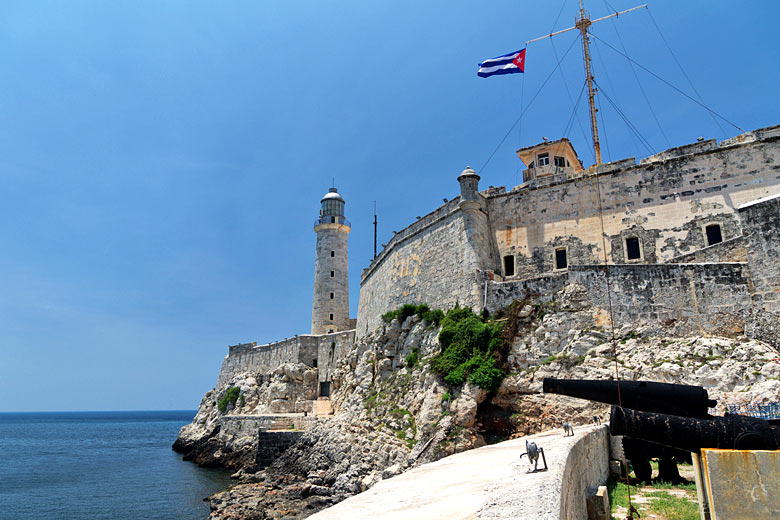
Motor along the eastern wedge of the bay to the towering Carrara marble statue of Christ carved 18 metres high in 1958 by Cuban sculptor Jilma Madera. From here, the views of Old Havana's skyline are beautiful, especially in the morning light.
Head back towards Old Havana, passing the forts which defended the city from pirates and expanding empires, the 16th-century Castle of San Salvador de la Punta, and The Royal Fort (the oldest in the Americas), which guards the entrance to the oldest square in Havana, the 16th-century Plaza de Armas. The curved Cuban baroque facade of the 18th-century Spanish governor's residence (now the Museum of the City) is the most significant building on this leafy square, enlivened today by second-hand book and curio sellers' stalls.
Explore Old Havana
Old Havana, the heaped-with-history Spanish colonial core, is best explored on foot. Head to 16th-century Plaza Vieja for painstakingly restored columned buildings, mediopuntos (stained glass half-moon windows), iron grilles and grandeur followed by beer, coffee and cake at the brewery and cafés scattered in the square; to the San Francisco Square hitched to the eastern edge of the city by the new cruise port, and dominated by the former 16th-century Basilica of San Francisco. The Cathedral Square is impressive for the rippling Cuban baroque facade of the 18th-century coral-encrusted cathedral flanked by the handsome mansions of Spanish nobles.
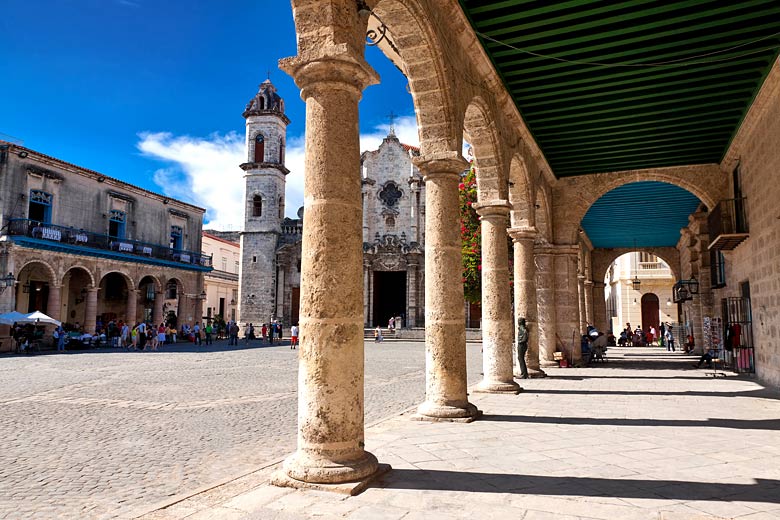
From the southern end of Old Havana, swing by the souvenir market, the grandiose, under-restoration train station, pootle past Hemingway's plush daiquiri drinking hole, El Floridita, the sumptuous ornamented neoclassical Museum of Fine Arts embellished with 1,250 tonnes of marble, the sparkling new white Gran Hotel Manzana Kempinski La Habana with its popular pool terrace bar, and spy the stellar art-deco ziggurat- and bat-topped former Bacardi rum headquarters.
Opposite stands the domed golden-and-cream 1920 Presidential Palace decked out in Tiffany interiors and frescoes. Now home to the Museum of the Revolution, the exterior courtyard houses Granma, the cruiser which brought Fidel Castro and his acolytes to the eastern coast of Cuba in 1956 to foment rebellion in the mountains. A new statue of Cuba's apostle, the poet, journalist, and mastermind of Cuba's 1895-98 war of independence from Spain, José Martí, and donated by the Bronx Museum in the US, rears up on horseback in front of the Revolution Museum.
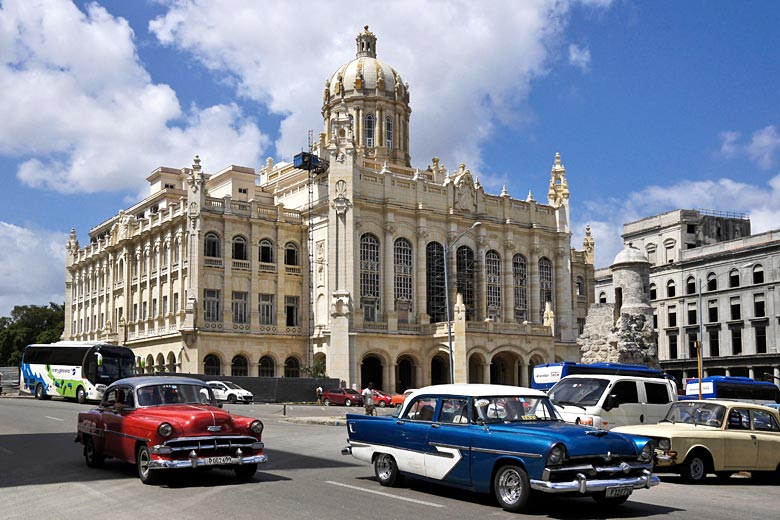
Driving up Prado, a tree-lined avenue bisected by a Barcelona Las Ramblas-style marble pavement promenade, it opens out to reveal the small central park which faces the 1856 Hotel Inglaterra, and the gorgeously restored neo baroque Alicia Alonso Grand Theater, home to the national ballet of Cuba. Beyond the marble angels adorning the facade of the Grand Theater, the enormous Capitol building, looking similar to the one in Washington, stands. Undergoing restoration, the domed and columned 1929 complex is due to re-open as the seat of the Cuban Parliament.
Cruise through Centro
The convertible cruises right down Reina Street, one of the main arteries of the residential district known as Centro. Gritty Centro is clogged with traffic, and buildings embellished with frothy decoration, boasting balconies, balustrades, and carved grilles. It's a hotchpotch of art nouveau, art deco, and fine Spanish colonial, and the painted spread straddles teal green, sky blue, rose pink, and coffee and cream. Reina's principal sites include the 1954 Grand Masonic Lodge, topped by a globe, the Spanish governor's summer residence and gardens of La Quinta de los Molinos, and the late art deco sculpted horse heads decorating Havana University's Veterinary College.
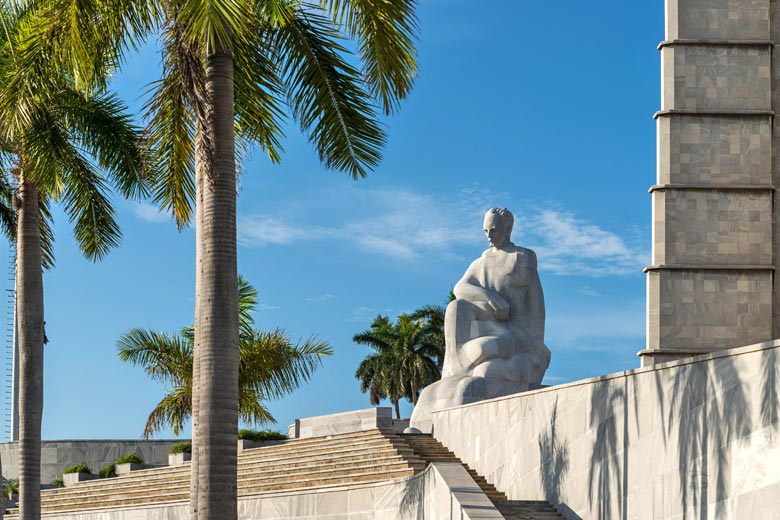
A detour circles the University of Havana's impressive 20th-century premises with its wide staircase leading up to its Alma Mater statue, before heading south to the vast Revolution Plaza dominated by the marble 18-metre high statue of José Martí, and an obelisk, which overlook the Ministry of the Interior, and the Ministry of Communications, both adorned by ironwork sculptures of the faces of Che Guevara, and Revolution commander Camilo Cienfuegos, respectively. The plaza is also a favourite gathering spot for classic cars. Photographers snap the line up of candy-coloured gleaming beasts.
Get a feel for Vedado
From the plaza, head north up elegant tree-lined Paseo, one of the Vedado neighbourhood's elegant avenues dotted with smart mansions. Vedado expanded, especially, with the newly rich after Cuba's 20th-century sugar boom, and smart villas and homes line its streets. Today, its mansions house homes, art galleries, private bars, and restaurants, as well as government institutions.
Turning right down Calle 23, known as La Rampa, the classic car drives into the heart of the nightlife, restaurant and hotel zone of Vedado. Admire the 1956 mob-built Hotel Capri, which featured in the Godfather Part II, and then take a turn via the imposing Hotel Nacional, the iconic building perched on a bluff overlooking the sea. Celebrities and meddling mafia have passed through its fabled doors - it even hosted the 1946 Mob Conference where the gathered mafiosi dined on roast flamingo and roast manatee while discussing how to turn Havana in to the Las Vegas of the Caribbean.
Calle 23 leads you back to the Malecón. The sun spreads its rays in the late afternoon on to the colourful eclectic facades of these ocean-facing buildings. It's the perfect time for a sunset gander, and a golden opportunity for photographers.
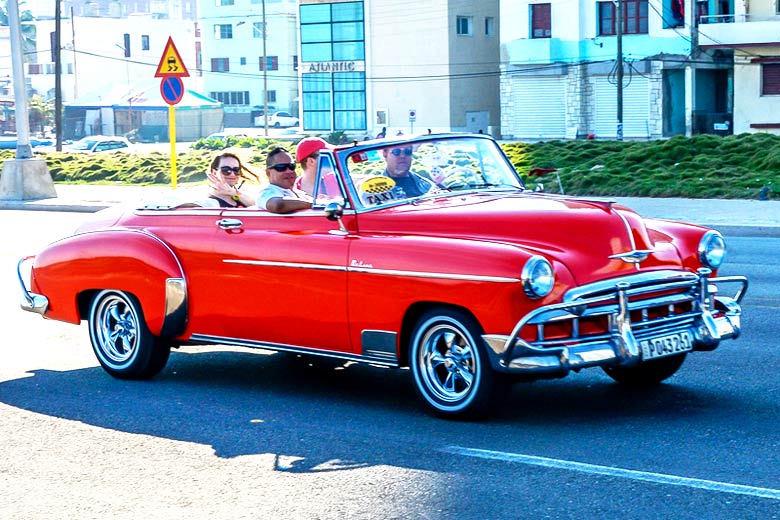
If cruising along the Malecón in a classic car sounds like your kind of city tour, then you won't want to miss the latest great value fares from Virgin Atlantic to help you get to Havana for less than you might expect. Get in touch with Vintage Tours to find out more about booking a personal, memorable tour of the city. You can also see what the weather in Havana is like, and see when we think is the best time to go to make the most of an open top tour.
More about Havana
Havana by month
Jan Feb Mar Apr May Jun Jul Aug Sep Oct Nov Dec
Explore holiday destinations
- Beach holidays
- City breaks
- Family holidays
- Half term holidays
- Spring holidays
- Summer holidays
- Autumn holidays
- Winter sun holidays
- Honeymoons
- Coolcations
- Compare places
- Ski resorts
Save with latest deals & discounts
- Holiday offers
- Top travel brands
- Airlines & flights
- Discount hotels
- TUI
- Jet2holidays
- Neilson
- Marella Cruises
- Pierre & Vacances
- Caledonian Travel
- Club Med
- January sales
Airport parking
- Manchester Airport
- Stansted Airport
- Bristol Airport
- Luton Airport
- Birmingham Airport
- Edinburgh Airport
- Gatwick Airport
- Glasgow Airport
- Newcastle Airport
Airport lounges
- Manchester Airport
- Birmingham Airport
- Bristol Airport
- Edinburgh Airport
- Glasgow Airport
- Heathrow Airport
- Newcastle Airport
- Stansted Airport
- Gatwick Airport
Be inspired
Get your weekly fix of holiday inspiration from some of the world's best travel writers plus save on your next trip with the latest exclusive offers
We promise not to share your details








